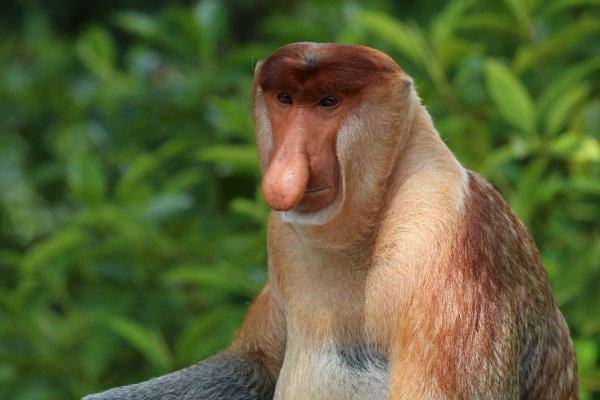Facts About Proboscis monkey
The proboscis monkey, also known as the long-nosed monkey or "bekantan" in Indonesia, is a distinctive primate native to Borneo in Southeast Asia. This arboreal species is easily recognizable by its large nose, reddish-brown fur, and long tail. The proboscis monkey coexists with the Bornean orangutan and belongs to the monotypic genus Nasalis. It falls under the subfamily Colobinae and has two subspecies: N. l. larvatus and N. l. orientalis.
As one of the largest monkeys in Asia, the proboscis monkey exhibits pronounced sexual dimorphism, with males possessing much larger noses than females. They typically live in social groups, usually consisting of one adult male, several females, and their offspring, although some individuals prefer a solitary existence. Communication among proboscis monkeys is quite sophisticated, involving a variety of vocalizations for different situations.
Their diet primarily consists of fruits, leaves, flowers, seeds, and insects, with a preference for specific plant species. Unfortunately, proboscis monkeys are endangered due to habitat loss from logging and the expansion of oil palm plantations, as well as hunting for food and traditional medicine. Their population has significantly declined in recent years.
Conservation efforts are underway across Borneo to protect these fascinating creatures. They are safeguarded by various laws and can be found in several protected areas in both Indonesia and Malaysia.
In Indonesian culture, the proboscis monkey is sometimes referred to as the "Dutch monkey" or "Dutchman" because of its perceived resemblance to Dutch colonizers. Despite being considered unattractive by some, proboscis monkeys have gained a following through internet memes, which has helped raise awareness and support for their conservation.

 Malaysia
Malaysia